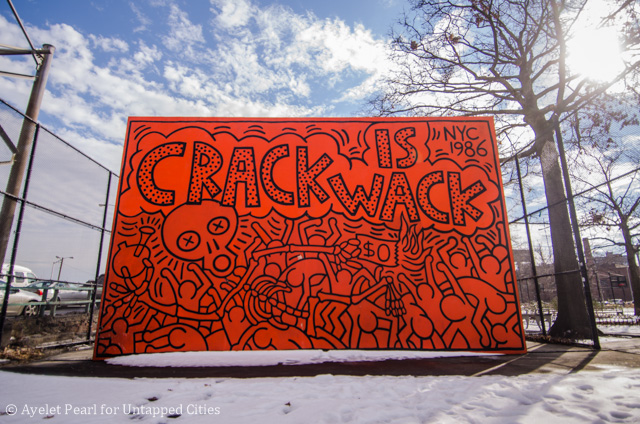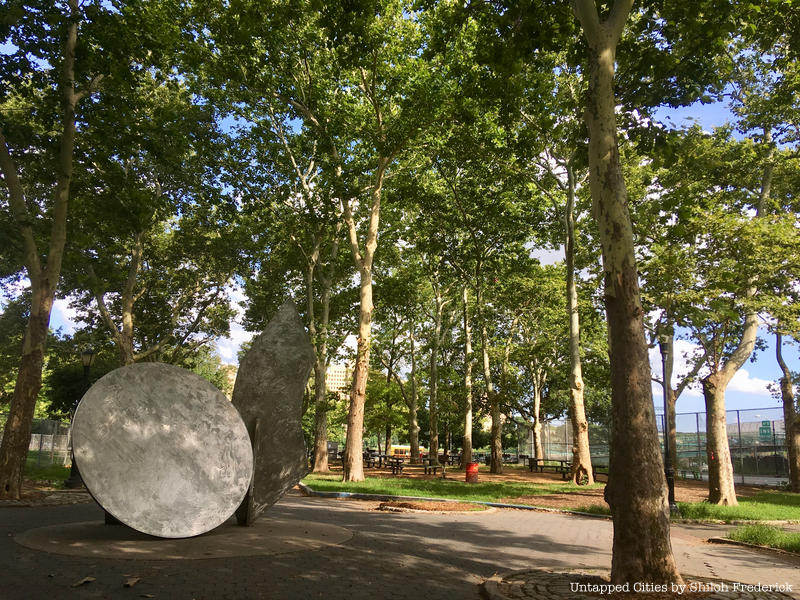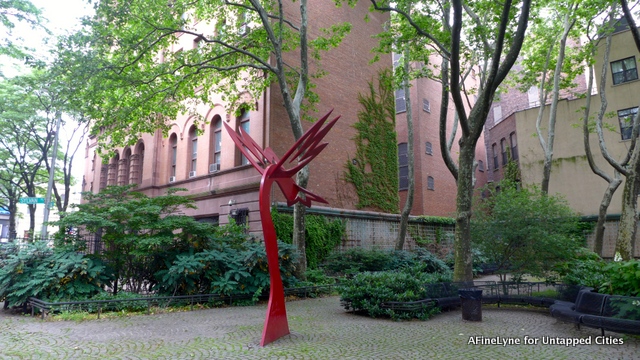Parks
Crack is Wack Playground

In the late 1980s, just as the crack-cocaine epidemic gained momentum urban areas including New York City, artist Keith Haring stumbled across a very reasonable way to spread an anti-drug message to the demographic that needed it most: Why not paint a playground?
Haring painted his black-on-orange CRACK IS WACK mural on both sides of a brick handball wall in an East Harlem playground near East 128th Street and Second Avenue, officially known as the “Crack is Wack Playground.”
In 2007, the wall was restored by a group of artists and is still on view today. While not a classic park as the remaining on this list, it is worth the visit as it’s one of the few remaining Keith Haring pieces thought to still survive in the city.
Thomas Jefferson Park

Thomas Jefferson Park, named after the third president of the United States has been open serving its local community since 1905. Complete with a track, basketball and baseball courts, soccer fields, and large playground. The recreation center offers many amenities including fitness rooms, classes, and after school programs for kids.
In the summer months, there is an outdoor pool with ground complete with grills and picnic tables for enjoyable summer gatherings. The park is located at 1 Ave and FDR Dr, between East 111 St and East 114 St.
Harlem Art Park
 Sculpture by Artist Jorge Luis Rodriguez in 1985
Sculpture by Artist Jorge Luis Rodriguez in 1985
Located at the corner of East 120th Street and Sylvan Place, the land was originally acquired by the City in 1929 for a public bath. It went unused until 1938 when it became an informal sitting park, and was handed over to the Parks Department jurisdiction in 1945.
The Harlem Art Park is part of the Historical Signs Project. When you enter the parking lot adjacent to the Harlem Courthouse building, you will notice a gated garden on the south side, which can only be reached from 120th Street. Upon entering, you will see Jorge Luis Rodriguez’s sculpture “Growth,” the first project completed by the Percent for Art Program which uses one percent of the Department of Cultural Affairs specific capital project budgets to commission works of art.





